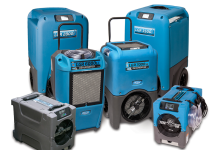How to choose the best dehumidifier (Part 1 of 2)

With all the different types of dehumidifiers available, how do you know which one to choose? Consider the following questions to ensure you select the right dehumidifier for your application:
- Do I need fast and thorough drying (such as for a water damage project) or just ongoing humidity control?
- Do I need a humidistat to maintain a certain humidity level for a specific setting, e.g., a wine cellar?
- Will I be using this to control humidity in a crawlspace, unfinished basement, or other area where temperatures may be lower?
- How easily can I reach the manufacturer for technical assistance?
- Are parts readily available?
- How does the warranty coverage compare with other dehumidifiers?
- Who can service the dehumidifier if a warranty or other repair is necessary?
For ongoing humidity control, a conventional refrigerant dehumidifier is often adequate, but make sure it includes a humidistat for set-and-forget humidity control. For the extra challenges posed by water mitigation projects, professionals turn to low grain refrigerant (LGR) dehumidifiers to achieve the most rapid and thorough drying.
Both LGR and conventional dehumidifiers work best between 70°–90°F (21°–32°C). Choose a specially engineered dehumidifier (e.g., the PHD 200) for cooler spaces (below 60°F/15.6°C) such as a crawlspace or wine cellar. Most LGR and conventional dehumidifiers are designed for warmer spaces and won’t be as efficient in a cool area.
Legend Brands has more than 160 distributor locations across the US and Canada that can easily service and provide parts for Dri-Eaz® dehumidifiers. The Legend Brands YouTube playlist provides videos showing how to maintain your dehumidifier to keep it running efficiently. Unlike many cheap dehumidifiers assembled overseas, Dri-Eaz units are designed by engineers in our Burlington, Washington, plant, where they can oversee testing and day-to-day manufacturing.